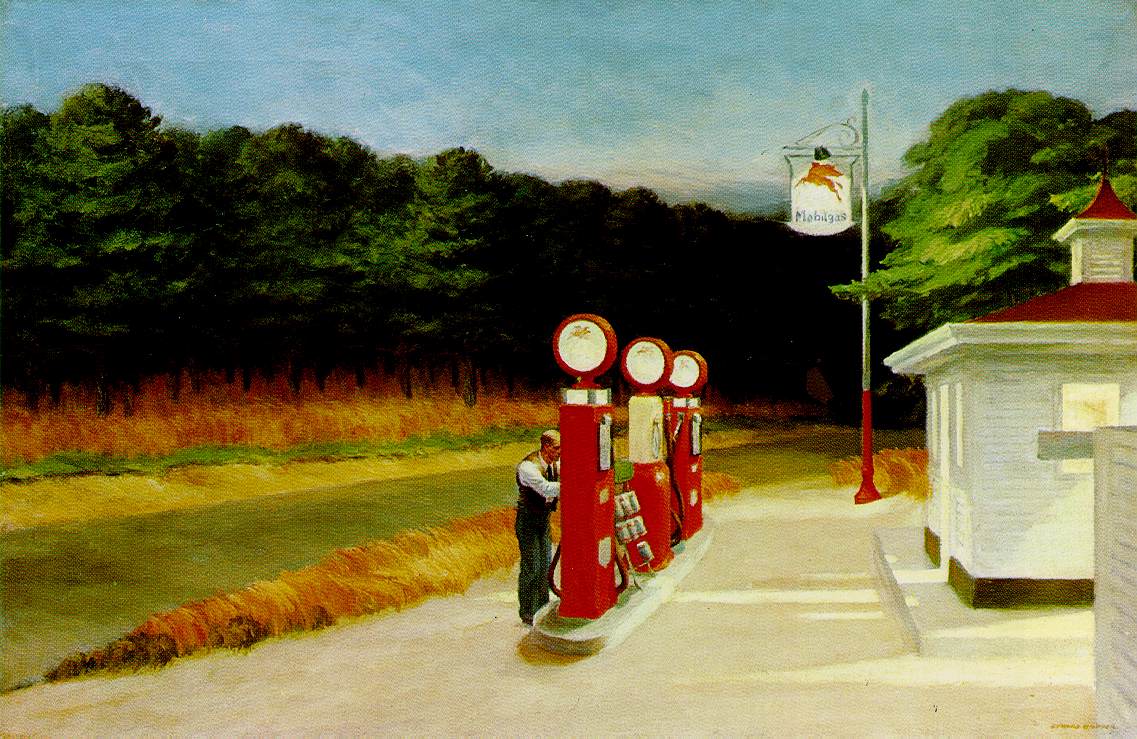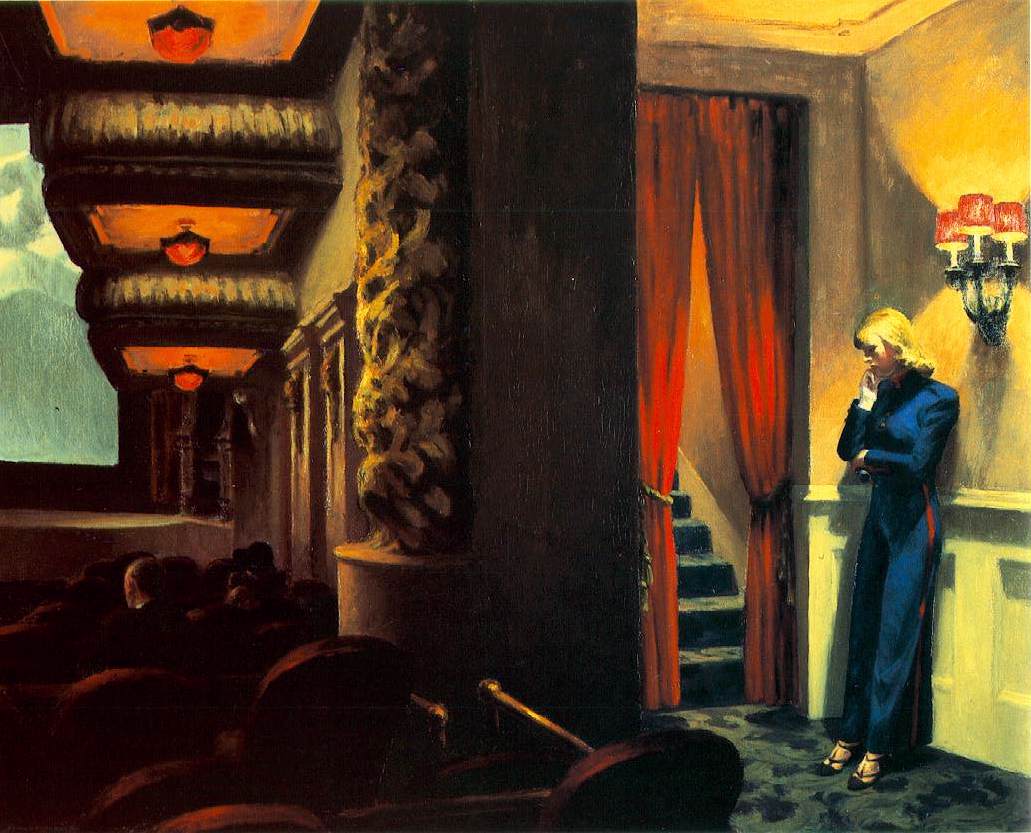hopper
 Edward Hopper said that .......................... was inspired by "a restaurant on New York's Greenwich Avenue where two streets meet," but the image, with its carefully constructed composition and lack of narrative, has a timeless quality that transcends its particular locale. One of the best-known images of 20th-century art, the painting depicts an all-night diner in which three customers, all lost in their own thoughts, have congregated. Fluorescent lights had just come into use in the early 1940s, and the all-night diner emits an eerie glow, like a beacon on the dark street corner. Hopper eliminated any reference to an entrance, and the viewer, drawn to the light, is shut out from the scene by a seamless wedge of glass. The four anonymous and uncommunicative night owls seem as separate and remote from the viewer as they are from one another.
Edward Hopper said that .......................... was inspired by "a restaurant on New York's Greenwich Avenue where two streets meet," but the image, with its carefully constructed composition and lack of narrative, has a timeless quality that transcends its particular locale. One of the best-known images of 20th-century art, the painting depicts an all-night diner in which three customers, all lost in their own thoughts, have congregated. Fluorescent lights had just come into use in the early 1940s, and the all-night diner emits an eerie glow, like a beacon on the dark street corner. Hopper eliminated any reference to an entrance, and the viewer, drawn to the light, is shut out from the scene by a seamless wedge of glass. The four anonymous and uncommunicative night owls seem as separate and remote from the viewer as they are from one another.
Picture 1

Picture 2

PICTURE 3

PICTURE4

Description 2
..............depicts two women inside a restaurant. They sit not relaxed facing each other and at a table by a window. Outside the window is an advertisement that in its entirety, based on title of the painting, says ............. The sign is red with large letters with red, orange and blue light bulbs. The woman and the sign make two halves to this picture. The restaurant itself is dark. The only light appears to be coming from the window. By the ladies there is a lamp, but it is unlit. In the background another couple sit, the man almost in complete darkness.PICTURE 1

PICTURE 2

Picture 3

Picture 4

Match the Picture to the description

Description 1
The painting portrays a lone woman staring into a cup of coffee in an Automat at night. The reflection of identical rows of light fixtures stretches out through the night-blackened window.
Hopper's wife, Jo, served as the model for the woman. [2] However, Hopper altered her face to make her younger (Jo was 44 in 1927). He also altered her figure; Jo was a curvy, full-figured woman, while one critic has described the woman in the painting as "'boyish' (that is, flat-chested)" [3]
As is often the case in Hopper's paintings, both the woman's circumstances and her mood are ambiguous.
Description 2
"Cape Cod Morning" by Edward Hopper is American realism at its best. The glancing light of the early morning sun highlights the trees and the wheat in the fields as it streams in through the window of a white clapboard house. Inside a female figure looks out at the newborn day. Morning has broken, like the first morning, and ahead is a day filled with promise
Description 3
The loneliness of the modern city is a central theme in Hopper’s work. In this painting, a woman sits on the edge of a bed in an anonymous hotel room. It is night and she is tired. She has taken off her hat, dress and shoes, and—too exhausted to unpack—she is checking the time of her train the next day. The space is confined by the wall in the foreground and the chest of drawers on the right; while the long diagonal line of the bed directs our gaze to the background, where an open window turns the viewer into a voyeur on what is happening in the room.
Correction

The painting portrays a lone woman staring into a cup of coffee in an Automat at night. The reflection of identical rows of light fixtures stretches out through the night-blackened window. Hopper's wife, Jo, served as the model for the woman. However, Hopper altered her face to makeher younger (Jo was 44 in 1927).

 "Cape Cod Morning" by Edward Hopper is American realism at its best. The
glancing light of the early morning sun highlights the trees and the
wheat in the fields as it streams in through the window of a white
clapboard house. Inside a female figure looks out at the newborn day.
Morning has broken, like the first morning, and ahead is a day filled
with promise
"Cape Cod Morning" by Edward Hopper is American realism at its best. The
glancing light of the early morning sun highlights the trees and the
wheat in the fields as it streams in through the window of a white
clapboard house. Inside a female figure looks out at the newborn day.
Morning has broken, like the first morning, and ahead is a day filled
with promise
